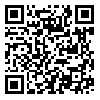Volume 3, Issue 3 (9-2012)
jdc 2012, 3(3): 155-163 |
Back to browse issues page
Download citation:
BibTeX | RIS | EndNote | Medlars | ProCite | Reference Manager | RefWorks
Send citation to:



BibTeX | RIS | EndNote | Medlars | ProCite | Reference Manager | RefWorks
Send citation to:
Ahrari I, Dastgheyb L, Ghazi Z, Sadati M. Frequency of kerion complications. jdc 2012; 3 (3) :155-163
URL: http://jdc.tums.ac.ir/article-1-5010-en.html
URL: http://jdc.tums.ac.ir/article-1-5010-en.html
1- , imanahrari@gmail.com
Abstract: (42907 Views)
Background and Aim: Tinea capitis is one of the most common fungal infections in dermatology. Although the new medications and development in social health have reduced its incidence, it is still common in Iran, especially in rural areas. The aim of this study was to describe the frequency of complications of kerion.
Methods: Eighteen affected patients, who were hospitalized in dermatology ward because of kerion, in a 10-year period, were revisited and according to their medical documents, data collection forms were filled.
Results: 61.1% of the patients were younger than 10 years of age and 77.7% were male. The mean disease duration from the onset of symptoms to the time of correct diagnosis and management was 16.9 days. The frequency of scar and alopecia was equal in all groups and occurred in 100% of patients. Two patients also suffered from isolation due to scarring alopecia. Various types of medications, made no difference in the prognosis and resultant scarring alopecia.
Conclusion: The frequency and types of sequela showed no relationship with age, type of medication and duration from the onset of disease and correct management. Scar and alopecia occurred in all patients. Further investigations on the new treatment modalities are required to reduce scar formation.
Type of Study: Research |
Subject:
General
Received: 2012/08/5 | Accepted: 2012/09/29 | Published: 2013/07/16
Received: 2012/08/5 | Accepted: 2012/09/29 | Published: 2013/07/16
Send email to the article author
| Rights and permissions | |
 |
This work is licensed under a Creative Commons Attribution-NonCommercial 4.0 International License. |





